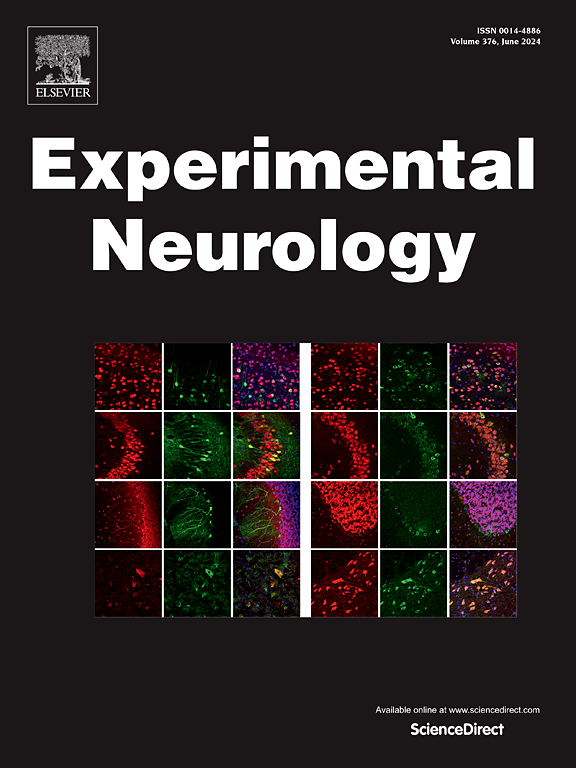Reactive astrocytes generated from human iPSC are pro-inflammatory and display altered metabolism
IF 4.2
2区 医学
Q1 NEUROSCIENCES
引用次数: 0
Abstract
Astrocytes are the most abundant type of glial cell in the central nervous system and they play pivotal roles in both normal health and disease. Their dysfunction is detrimental to many brain related pathologies. Under pathological conditions, such as Alzheimer's disease, astrocytes adopt an activated reactive phenotype which can contribute to disease progression. A prominent risk factor for many neurodegenerative diseases is neuroinflammation which is the purview of glial cells, such as astrocytes and microglia. Human in vitro models have the potential to reveal relevant disease specific mechanisms, through the study of individual cell types such as astrocytes or the addition of specific factors, such as those secreted by microglia. The aim of this study was to generate human cortical astrocytes, in order to assess their protein and gene expression, examine their reactivity profile in response to exposure to the microglial secreted factors IL-1α, TNFα and C1q and assess their functionality in terms of calcium signalling and metabolism. They successfully differentiate and stimulated reactive astrocytes display increased IL-6, RANTES and GM-CSF secretion, and increased expression of genes associated with reactivity including, IL-6, ICAM1, LCN2, C3 and SERPINA3. Functional assessment of these reactive astrocytes showed a delayed and sustained calcium response to ATP and a concomitant decrease in the expression of connexin–43. Furthermore, it was demonstrated these astrocytes had an increased glycolytic capacity with no effect on oxidative phosphorylation. These findings not only increase our understanding of astrocyte reactivity but also provides a functional platform for drug discovery.
由人类 iPSC 生成的反应性星形胶质细胞具有促炎作用,并显示出新陈代谢的改变。
星形胶质细胞是中枢神经系统中最丰富的胶质细胞类型,它们在正常健康和疾病中都发挥着关键作用。星形胶质细胞的功能障碍对许多与大脑有关的病症都是有害的。在阿尔茨海默病等病理条件下,星形胶质细胞会出现活化反应表型,从而导致疾病进展。许多神经退行性疾病的一个突出风险因素是神经炎症,而神经炎症正是星形胶质细胞和小胶质细胞等胶质细胞的职责范围。人类体外模型有可能通过研究星形胶质细胞等单个细胞类型或添加小胶质细胞分泌的特定因子来揭示相关疾病的特定机制。本研究的目的是生成人皮质星形胶质细胞,以评估它们的蛋白质和基因表达,检查它们对小胶质细胞分泌因子 IL-1α、TNFα 和 C1q 的反应谱,并评估它们在钙信号和新陈代谢方面的功能。对这些反应性星形胶质细胞进行的功能评估显示,它们对 ATP 的钙反应延迟且持续,同时连接蛋白-43 的表达也有所下降。此外,研究还表明这些星形胶质细胞的糖酵解能力增强,但对氧化磷酸化没有影响。这些发现不仅增加了我们对星形胶质细胞反应性的了解,还为药物发现提供了一个功能性平台。
本文章由计算机程序翻译,如有差异,请以英文原文为准。
求助全文
约1分钟内获得全文
求助全文
来源期刊

Experimental Neurology
医学-神经科学
CiteScore
10.10
自引率
3.80%
发文量
258
审稿时长
42 days
期刊介绍:
Experimental Neurology, a Journal of Neuroscience Research, publishes original research in neuroscience with a particular emphasis on novel findings in neural development, regeneration, plasticity and transplantation. The journal has focused on research concerning basic mechanisms underlying neurological disorders.
 求助内容:
求助内容: 应助结果提醒方式:
应助结果提醒方式:


